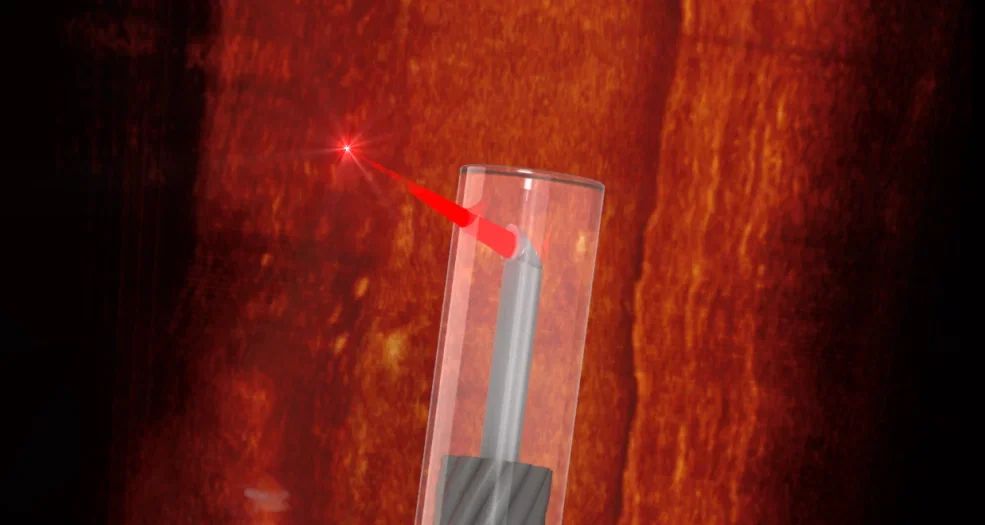
A team of researchers have created a probe with a camera that is thinner than a human hair. The lateral diameter of the lens is 0.13 mm; it will not be enough for the naked eye to see it.

The 5x zoom lens is 3D printed. After receiving the lens, it was connected to an optical coherence tomography (OCT) scanner as a flexible probe. OCT is a 3D sensitive scanning technology that uses near-IR light and modifies wave interference between the reference and probe beams to produce a 3D image of living tissue.

The developed scanner came out quite small in order to cruise through the blood vessels without any problems. Using it, you can build a three-dimensional picture of the vascular bed and tissues at a depth of about 0.5 mm below the skin surface. All this will give a chance to detect cholesterol plaques that accumulate on the walls of blood vessels and provoke various diseases and pathologies, for example, thrombosis.
In the future, the creators of the technology intend to significantly develop their offspring so that the camera can freely enter the inner ear or nerve nodes.

The 5x zoom lens is 3D printed. After receiving the lens, it was connected to an optical coherence tomography (OCT) scanner as a flexible probe. OCT is a 3D sensitive scanning technology that uses near-IR light and modifies wave interference between the reference and probe beams to produce a 3D image of living tissue.

The developed scanner came out quite small in order to cruise through the blood vessels without any problems. Using it, you can build a three-dimensional picture of the vascular bed and tissues at a depth of about 0.5 mm below the skin surface. All this will give a chance to detect cholesterol plaques that accumulate on the walls of blood vessels and provoke various diseases and pathologies, for example, thrombosis.
In the future, the creators of the technology intend to significantly develop their offspring so that the camera can freely enter the inner ear or nerve nodes.
Login or register to post comments
Comments 0